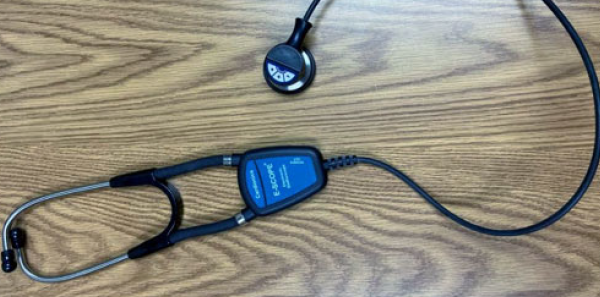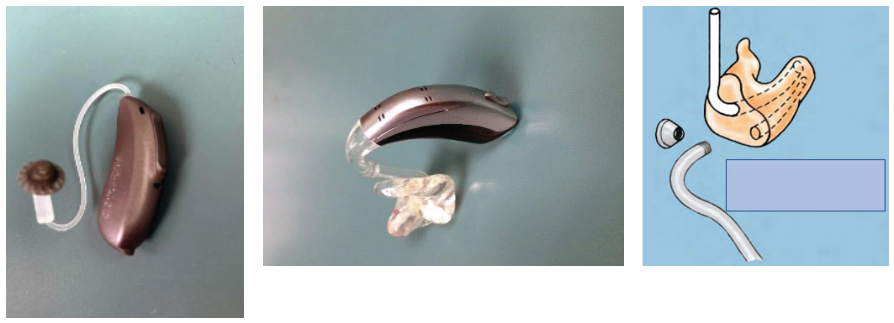
The Options
No Hearing Aids: If you do not use hearing aids but know you aren’t hearing through your standard stethoscope as well as you used to, you can, like me, purchase an amplified stethoscope (see Figure 1). These are typically battery-operated, and you’ll want to become familiar with the on/off and volume up/down features.
Explore This Issue
ACEP Now: Vol 39 – No 08 – August 2020Invisible Hearing Aids: If you use the tiny, invisible-in-the-canal hearing aids and they are seated deeply in your ear canals, you may be able to use a regular or amplified stethoscope if it is comfortable to put the stethoscope earpieces in your ears. If not, you’ll want to use a stethoscope connected to a headset that clamps over the ears (see Figure 2).

Figure 2: An amplified stethoscope with a headset.
Open Fit, Behind the Ear: Individuals with normal low-frequency hearing will often use open-fit, behind-the-ear hearing aids (see Figure 3). A small dome at the end of the tube fits in the ear, leaving the canal largely open. Depending on ear canal size and the placement of the dome in the ear canal, these hearing aid users may also be able to place an amplified stethoscope tip in the ear canal along with the dome. If this is not comfortable, use a stethoscope connected to a headset.

Figure 3 (LEFT): An open-fit behind-the-ear hearing aid.
Figure 4 (ABOVE): A standard behind-the-ear hearing aid with a custom earmold.
Figure 5 (ABOVE RIGHT): A special earmold that accepts a stethoscope tip.
Credit: David Baehren
In the Ear and Completely In the Canal: If these hearing aid users have some low-frequency hearing and wear open-fit hearing aids, they can also consider a stethoscope connected to a headset.
Behind the Ear with Earmold: If you use behind-the-ear hearing aids connected to a standard earmold (see Figure 4), have the audiologist remake the earmold to include a stethoscope vent. This is a large air hole in the earmold into which you can insert the stethoscope’s metal tip (see Figure 5). You’ll want to use an amplified stethoscope because it will go directly to the ear with hearing loss. An earmold with a large vent also can use a headset.
Direct Connections: Behind-the-ear hearing aids can be outfitted with a connector that will allow a cord to run directly from the stethoscope to the bottom of the hearing aid. This sends the stethoscope signal directly through the hearing aid’s signal processor (see Figure 6). The audiologist should verify the hearing aid can transmit the needed low frequencies.
Pages: 1 2 3 4 5 | Single Page





One Response to “Stethoscopes & Hearing Aids: Choosing the Right Devices for You”
June 28, 2021
rahul kumarWhere I can buy a amplified stethoscope..